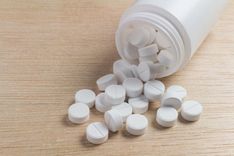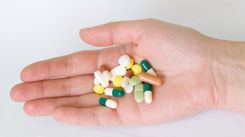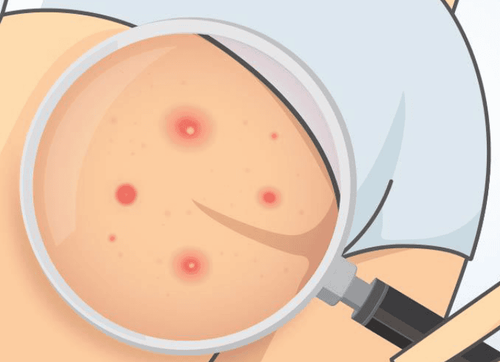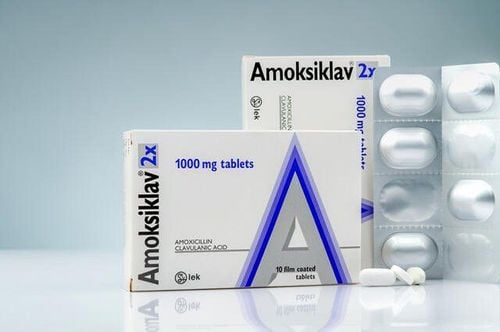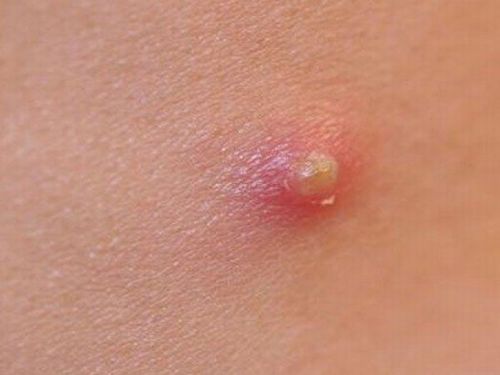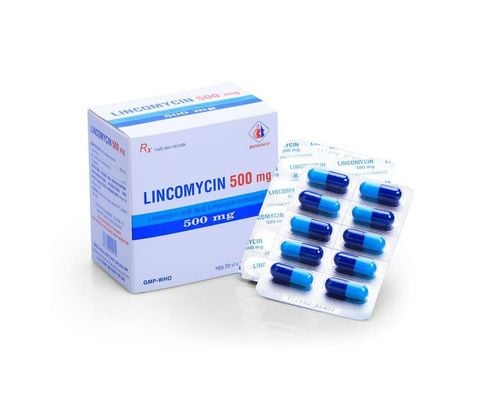"What is iodine? Iodine is a mineral that plays a very essential role in the daily diet. Additionally, iodine is also a topical antiseptic, used for external application on the skin. The article below will clarify information and the usage of iodine antiseptic."
1. What are the effects of Iodine?
What is Iodine? It is an antiseptic substance that promotes wound healing. The specific indications are as follows:
Antiseptic:
- Preventing the risks of infection in small, superficial wounds on the skin, wounds, and ulcers with discharge, reducing the microbial load in the wound.
- Iodine Cadexomer gel and Iodine Cadexomer-impregnated dressings are used to clean ulcers and wounds with discharge (such as pressure ulcers, venous stasis ulcers, traumatic wounds, or post-surgical infections), not effective in cleaning dry wounds.
- Disinfecting the skin before surgery.
- Wound healing: Iodine Cadexomer gel and Iodine Cadexomer-impregnated gauze are used to slow down the formation of necrotic tissue membranes, keeping the lesions softer.
The contraindications of Iodine are:
- People who are hypersensitive to Iodine or any ingredients in the Iodine formulation;
- Iodine Cadexomer gel and Iodine Cadexomer-impregnated gauze are contraindicated in thyroid disorders (such as non-toxic nodular goiter, Hashimoto's thyroiditis, and a history of Graves' disease), and in pregnant or breastfeeding women.
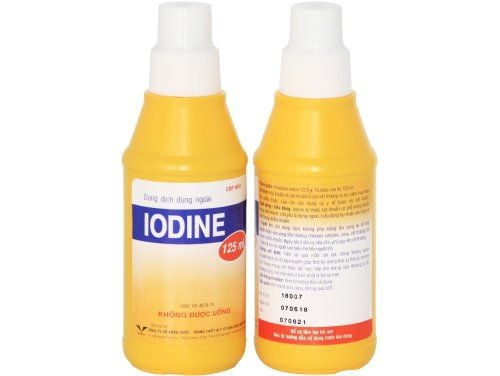
2. Dosage and administration of Iodine
After understanding what Iodine is, users need to know how to use it and the recommended dosage:
2.1 For adults
- Topical antiseptic use: Iodine solution or iodine tincture: Apply to the affected area as needed.
- Self-use of iodine solution or iodine tincture: Apply a small amount to the wound 1-3 times a day for up to 10 days.
- Iodine Cadexomer-impregnated paper: Place the iodine-impregnated paper on the wound, changing it 3 times a week or until the medication color changes from brown to grayish yellow. The frequency of changing should be reduced as the discharge from the wound decreases. Discontinue treatment if there is no more discharge from the wound. Do not use iodine Cadexomer-impregnated paper for more than 3 months.
- Iodine Cadexomer Gel: Apply a sufficient amount of gel to completely cover the wound (3 - 6 mm thick), then place it on a clean, dry sterile gauze and apply the gauze to the wound. Reapply the gel 3 times a week or until the medication changes color from brown to grayish yellow. Reduce the frequency of gel application as the discharge from the wound decreases. Treatment should be discontinued when the wound no longer has any discharge. Note: Apply a maximum of 50g of gel per application, with a maximum of 150g of gel per week, and do not use for more than 3 months.
2.2 For children
- Topical antiseptic use: Iodine solution or iodine tincture: Apply to the affected area as needed.
- Self-use of iodine solution or iodine tincture: Apply a small amount to the wound 1-3 times a day for up to 10 days.
3. What are the side effects of using Iodine?
When using Iodine, patients may experience some side effects such as: eczema, localized erythema, allergic reactions, local irritation, increased thyroid-stimulating hormone levels, headaches, acne, skin rashes, local pain, local swelling, urticaria, diarrhea, hypothyroidism, lymphadenopathy, mucosal bleeding, eosinophilia, angioedema, eyelid edema, pulmonary edema, joint pain, fever, etc.

4. Precautions when using Iodine
There are several things users should be aware of when using Iodine:
- Risk of allergic reactions: Sensitivity, swelling, allergies or rashes, angioedema, joint swelling, skin/mucosal hemorrhage, hives, petechial rash, eosinophilia.
- Skin reactions: Tissue irritation (tingling, burning sensation) with skin redness, and possible skin discoloration.
- Endocrine effects: Risk of altering thyroid metabolism, increased TSH levels.
- Cross-contamination: There is a risk of cross-contamination when using iodine Cadexomer-impregnated paper or gel tubes.
- Wound enlargement: The wound may appear larger in the first few days of treatment with iodine Cadexomer-impregnated paper or iodine Cadexomer gel due to reduced swelling.
- Other reactions: Iodine vapors may cause eye or respiratory irritation; a mild, transient pain may occur in the first few hours after using Iodine Cadexomer.
- Do not use iodine Cadexomer-impregnated paper or iodine Cadexomer gel for patients with severe renal impairment.
- Consult a doctor before using Iodine, iodine Cadexomer-impregnated paper, or iodine Cadexomer gel for pregnant or breastfeeding women.
This article helps answer the question of what Iodine is, provides guidance on its use, and highlights some precautions when using Iodine. Patients must follow all instructions from their doctor when using this antiseptic product. If any unusual symptoms indicating an allergic reaction occur, patients should notify their doctor immediately for prompt treatment.
Follow the website of Vinmec International General Hospital to stay updated on health, nutrition, and beauty information to protect the health of yourself and your loved ones.
Please dial HOTLINE for more information or register for an appointment HERE. Download MyVinmec app to make appointments faster and to manage your bookings easily.


